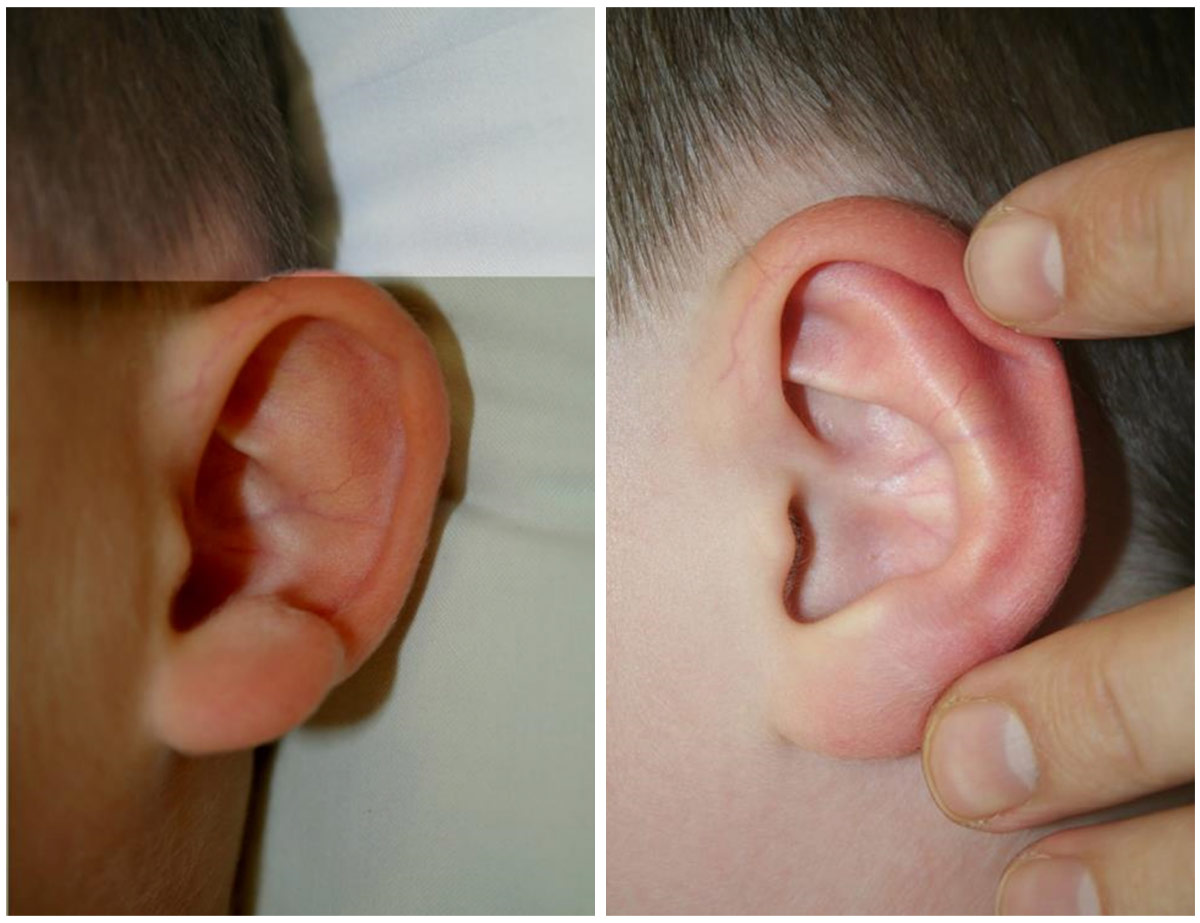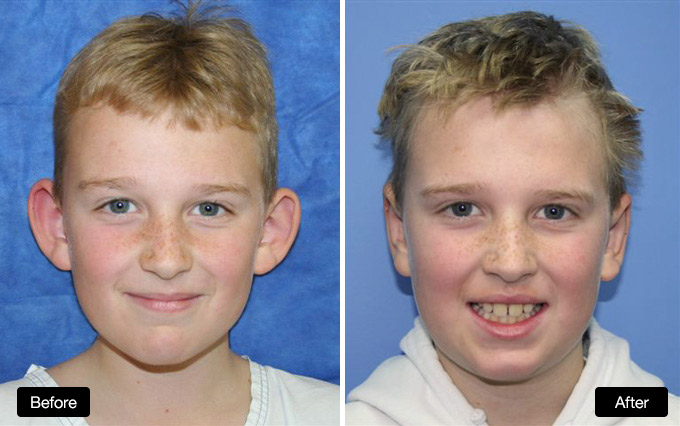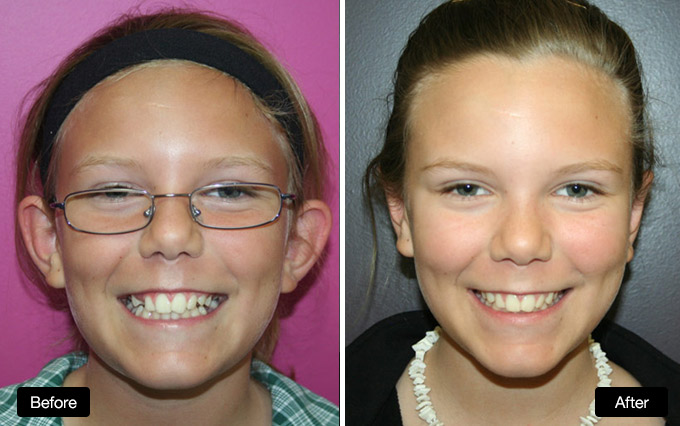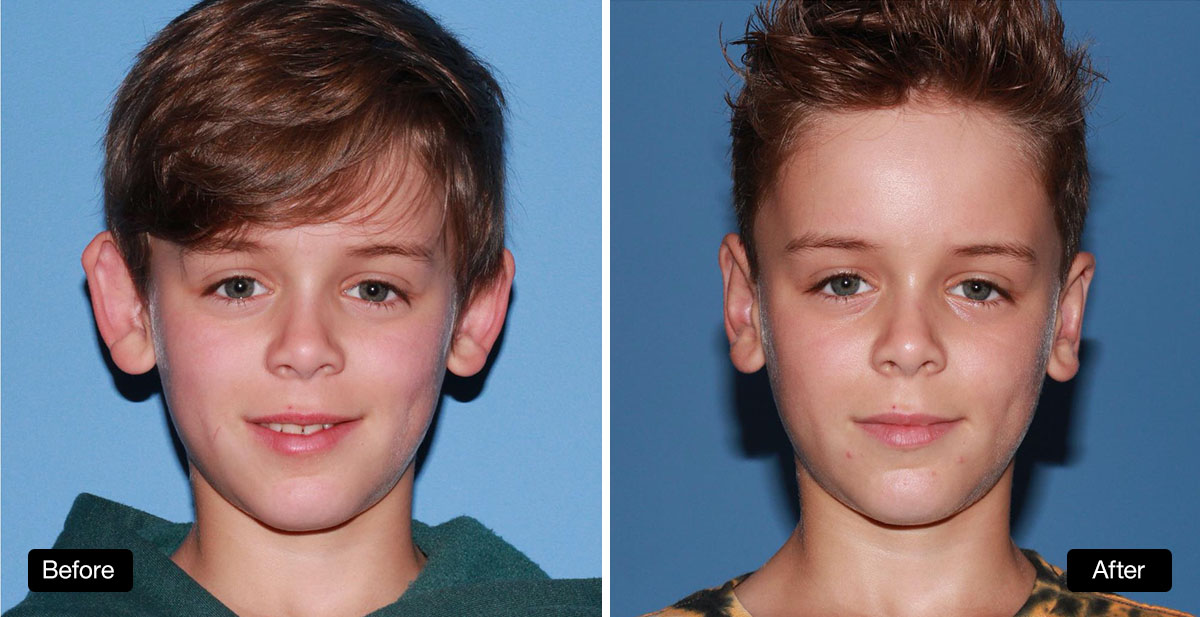Prominent Ear Correction (Otoplasty)
The following information sheet is intended to assist patients undergoing prominent ear correction surgery (otoplasty) with Dr Nicholas Lotz.
-
Patient Information
Fact Sheet
-
Tags
Otoplasty
otoplasty-ear-surgery-icon
Surgery to correct prominent ears, also known as ear pinning or otoplasty, is a commonly performed surgical procedure to correct ears which stick out too far from the side of the head.
Dr Lotz is one of Australias’ leading ear surgeons, and is highly experienced in performing surgery to correct prominent ears in children and adults; otoplasty is one of the most common procedures he performs.
Otoplasty surgery can correct not only the prominence of the ears, but also alter their shape and also to correct asymmetries between the two ears. The result is ears which are in a position more in harmony with the rest of your face.
There are also procedures to change the size of your ears (ear reduction surgery), and this is sometimes performed in conjunction with an otoplasty.

prominent-ear-correction-typical-appearance-dr-nik-lotz
The photo above shows the typical appearance of a prominent ear (L). You can see that by pushing on the ear (R), the natural fold is recreated when the ear is returned to a more normal position closer to the side of the head. Surgery aims to recreate this natural fold and position the ear in a more pleasing position.
Occasionally, if treated early enough in life, ear deformities can be corrected by ear splinting.
Before the
surgery
During your initial consultation, Dr Lotz will spend time with you discussing exactly what your concerns about your ears are. Sometimes patients find it helpful to bring along photographs of their own ears that they have altered to give an idea of the results they would ideally like. Whilst there is no guarantee that this will be able to be achieved, it is often helpful to get an idea of how much of a change you are after.
Dr Lotz will be able to show you photographs of other patients who have undergone prominent ear correction surgery, so you have an idea what to expect with respect to results, recovery, scars and any possible risks. Photographs will be taken of your ears during the consultation.
Otoplasty can be performed from any age once the ear cartilage is mature enough and children are old enough to comprehend the surgery and cooperate with the postoperative care. Usually this will be some time after the age of 7. In children, this surgery will ideally be performed before they start to be teased about the appearance of their ears, and is often scheduled around school holidays.
You will be sent an information pack further explaining the procedure, along with a detailed, personalised quotation which explains all the relevant costs pertaining to the procedure as well and any heath fund or Medicare rebates applicable.
Depending on your age and the type of alterations that your ears require, there may be some coverage by Medicare or your Health Fund for the surgery. An exact quotation for you will be provided for you after your consultation with Dr Lotz.
The surgery
Otoplasty surgery is always performed by Dr Lotz under a general anaesthetic in an accredited hospital, with an experienced anaesthetist. The surgery takes one and a half to 2 hours, and patients are discharged on the same day. During the surgery local anaesthetic is also used, which will help with post-operative pain relief.
Surgical procedure
The scars for otoplasty are all placed behind the ear so as not to be visible. The preferred technique that Dr Lotz uses is to recreate the natural shapes of the ears using permanent internal sutures. These stitches are all buried deep in the crease behind the ear and rarely cause any future issues. Dr Lotz has vast experience correcting deformed ears from incorrectly performed surgery, and he uses this technique as it is much more predictable and causes far fewer problems than other techniques that involve weakening the cartilage from the front of the ear.
Additional stitches may be used to pull the entire ear closer to the side of the head and also to correct prominence of the ear lobes if required. The wounds are then closed with dissolving stitches and a light head bandage applied.
After the surgery
Post-operative care
Otoplasty is not usually a painful procedure, and usually only simple pain medications are needed afterwards.
Dr Lotz will review you following the surgery before you are discharged, and you will be given a detailed instruction sheet.
Use of a head bandage & headband:
The head bandage is left in place for 2-3 days, at which time it is removed and you will be able to shower and wash your hair. You will be able to see your new ears now and there is usually only a very small amount of swelling and minimal bruising.
You will be given a light headband which will be worn night and day until a week following the surgery, and then at night for 3 more weeks.
Stitches:
The small stitches behind the ears are all dissolving and should fall out after about 3 weeks.
Follow-up & Recovery
Return to Activity
You are able to swim 2 weeks after the surgery, and most children are back at school 1-2 weeks after surgery.
Full sporting activity is allowed after 6 weeks, but Dr Lotz will give you instructions as to what you can do before then.
Final Review Appointment:
You will be seen for a final review about 2 months after your surgery.
Risks of otoplasty
- Asymmetry between the ears
- Recurrence of ear protrusion requiring further surgery
- Over or under-correction of the ears
- Infection
- Bleeding
- Painful or sensitive ears
- Numbness of the ears (usually short term)
- Protrusion of the permanent stitches requiring removal
- Thick keloid scars on the back of the ears which may require treatment
- Contour deformities of the ear
- Dissatisfaction with the results
Before & After
Case Example 1:

Prominent Ear Correction Surgery - Patient Before & After
Case Example 2:

Prominent Ear Correction Surgery - Patient Before & After
Case Example 3:
Preoperative (before) and post-operative (after) photos.

9 year old following prominent ear correction (otoplasty) - Dr Nicholas Lotz, Sydney
9 year old following prominent ear correction (otoplasty)
Frequently Asked Questions
otoplasty-ear-surgery-icon
How can prominent ear correction help me?
An otoplasty can reposition your ears so that they are more harmonious with your face. This can help you feel more comfortable wearing your hair up or having your hair cut short.
Is otoplasty covered by Medicare or my health fund?
If you are under the age of 18, then there is a Medicare item number for prominent ear correction, which is 45659×2. This means some of the surgery costs will be covered if you are in a health fund, although there will be some out-of-pocket costs to you as well. An exact quotation for you will provided after your consultation.
Where is the surgery performed and do I need to stay in hospital?
Ear surgery is performed in a private, accredited hospital under general anaesthetic with a qualified anaesthetist and usually take approximately 1.5 hours. You can go home the same day but will require someone to pick you up to care for you at least overnight.
Where will the scars on my ears be located and will I be able to see them?
The scars from an otoplasty are difficult to detect as they are typically placed behind the ear.
Are large or poorly shaped ears inherited?
Sometimes abnormal ears, particularly ears that stick out, can run in families and therefore may be an inherited characteristic.
Will my ears be perfectly symmetrical after the prominent ear correction procedure?
You can expect your ears to be fairly symmetrical after the procedure, however, keep in mind that perfect symmetry is unnatural and the goal is to achieve harmony rather than perfection.
When will I have my follow-up appointment and will it be with Dr Lotz?
You will be seen a few days after your surgery for removal of bandages. Following this, appointments will be made on an individual basis. We usually see you again about 2 months after surgery.
How will I know how to care for my wounds when I go home?
You will be given a detailed instruction sheet when discharged from the hospital. This document explains in great detail all of your after care following your ear surgery. You will be able to wash your hair after about 3 days when the bandages have been removed.
Is there an ideal age for to have otoplasty / ear surgery?
Otoplasty is possible at any age and is often performed in adults. For children ear surgery is often recommended after the age of 7, but is best once the child is mature enough to co-operate with surgery and the dressings. We aim to balance this with the aim to eliminate potential teasing and psychological trauma.
What will happen after the ear surgery?
You will be required to have a padded bandage around your head for roughly a few days, which will help keep your ears protected. When this is removed you will be given a light headband to wear for a further several days. This head band is then worn only at night for a month.
While otoplasty is not considered to be a painful operation, you may experience some numbness following the procedure. After about one week you should be able to return to work (or school) and may experience some bruising or swelling which will begin to settle down after the first week or two.

